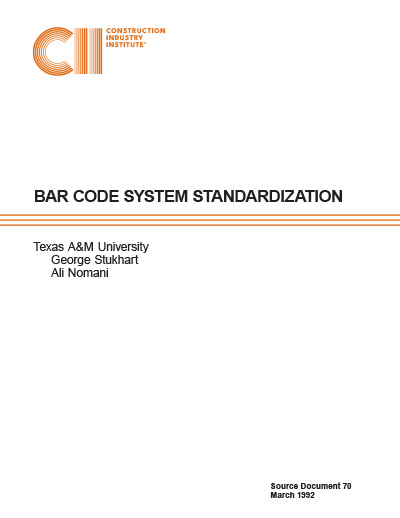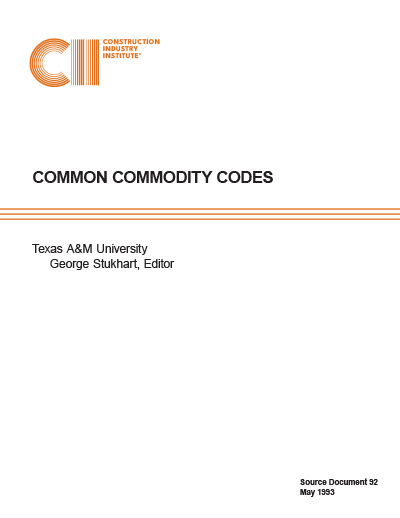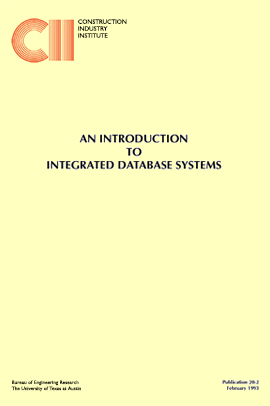
Bar Code System Standardization
In the book Future Perfect, the author singles out one company as a stunning example of the shift that will mean success for companies in the next decade. That company is Federal Express, who expertly manages time and space to meet customers’ needs. Federal Express can move mail overnight while being able to locate instantly every one of millions of packages. Federal Express uses many means of transferring real-time information; one of these is bar codes on every package. Bar codes provide the means by which Federal Express and their customers track shipping and billing simultaneously. (Davis ’87)
Companies that deliver services in real-time will have a decided advantage over their competition. Real time means that responses to inputs are fast enough to guide the process. (Davis ’87) Real-time information is necessary so that managers can verify events in progress and take necessary corrective actions. A real-time management information system is possible only when managers have the benefit of speed, accuracy, and reliability (Burke ’89). Automatic identification techniques are a basic part of computer technology. They access a variety of data and are quick and reliable. Bar code is the most widely used automatic identification technology and is receiving increasing attention from the construction industry.
Many changes are taking place in the construction industry due to extensive use of computers. Automation affects construction industry administration and accounting, project management, and design. Computers rely on data, raw and unorganized records, and process data into information, refined, usable, and structured data that can be easily interpreted by the user. The successful use of computers requires systems integration, developing the full range of automated capabilities, including standards for communication across boundaries, reducing trivial delays, and continuous improvement. Bar codes are not a system but an extremely effective identification tool that supports management systems (Meyers ’91). It is possible to achieve systems integration without bar codes but the user will experience loss of time and accuracy.
The CII has already investigated bar coding in construction. (Bell and McCullouch ’88, Bell and Stukhart ’86, Bell and Stukhart ’87). Several other papers discuss uses of bar codes in the construction industry (Rasdorf and Herbert ’90, Susca ’90, Blakey ’90). In the last four years, several companies and government organizations have adopted bar code for one or more construction operations. Despite this progress, the vast number of construction companies have not adopted this relatively simple technology.
The primary reason for this research and this paper is that construction companies are at the beginning of the steep climb of the S-curve of this technology. (Foster ’86). The knowledge is available, the processes well-known, the technology relatively simple, and the cost of entry relatively low. This one technology can have significant benefits to users. Although there may be many reasons why companies are not taking advantage of bar code, one major reason is the lack of standards. (Stukhart and Pearce ’89, Stukhart and Cook ’89, Stukhart ’90). Without standards, companies will develop their own requirements, and it will be difficult and costly for trading partners to exchange information. In effect there will be “islands of automation.” This is true in all automation.
To achieve the overall objective of increasing the use of bar codes in construction, this paper has the following goals:
- To reemphasize the benefits and costs of employing systems using bar codes in construction. By pointing out these benefits, perhaps more companies will be convinced to take advantage of bar code.
- To provide a current, comprehensive reference on bar coding in construction.
- To show how a common shipping label standard has evolved and how it will improve the materials management system.
- To show some future trends in bar coding.
Bar coding is further expanded in the SD-70 Bar Code System Standardization report. The primary reason for this research is that construction companies are at the beginning of the steep climb of the S-curve of this technology. The knowledge is available, the processes well-known, the technology relatively simple, and the cost of entry relatively low. This one technology can have significant benefits to users. Although there may be many reasons why companies are not taking advantage of bar code, one major reason is the lack of standards. Without standards, companies will develop their own requirements, and it will be difficult and costly for trading partners to exchange information. Without standardization, the effect will continue to be “islands of automation.”
To achieve the overall objective of increasing the use of bar codes in construction, this research has the following goals: (SD-70, p. 1)
- To reemphasize the benefits and costs of employing systems using bar code in construction. By pointing out these benefits, perhaps more companies will be convinced to take advantage of bar code.
- To provide a current, comprehensive reference on bar coding in construction.
- To show how a common shipping label standard has evolved and how it will improve the materials management system.
- To show some future trends in bar coding.



